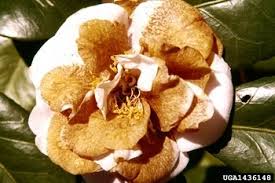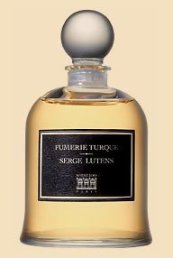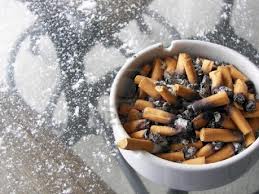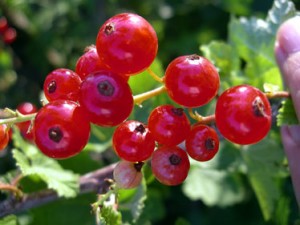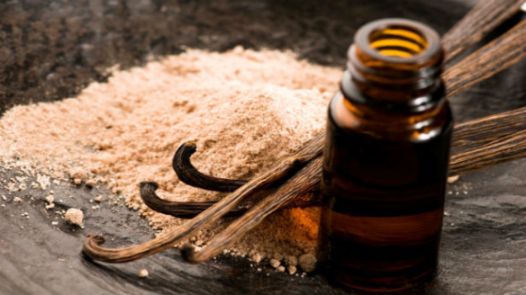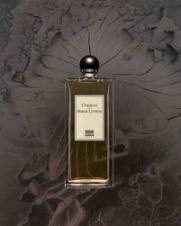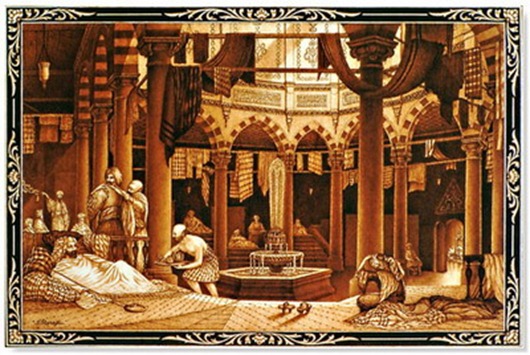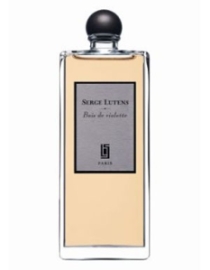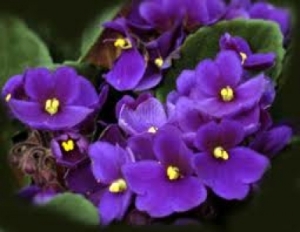Last call was hours ago, and the nightclub is closing down. In the harsh glare of the neon overhead lights, the room — once so entrancingly mysterious and secretive — now looks merely seedy. The tables are littered with the remnants of glasses, many holding the congealed thick dregs of a brownish liquid, and a few used in place of an ashtray. The stale smell of cigarette smoke lingers in the air, and in overflowing ashtrays all over the room.
Up on the black, velvet-draped stage, a lone musician has stayed behind his band mates, sitting on a crate and holding his saxophone with a cigarette dangling from his mouth. He looks up at the singer who has returned to retrieve her gardenia from where she tossed it out into the dark room filled with her adoring fans. She finds it at one of the rickety tables closest to the stage, fallen into an almost-empty glass of scotch and cigarettes. It’s dying, covered in brown juices and ashes, and with its once-bright, velvety petals curled up at the edges. Yet, in the midst of all the booze and smoke, it still releases a rich, sweet smell that lingers in the air like a kiss before dying.
The images that fill my mind when I wear Une Voix Noire from Serge Lutens are the exact ones that he intends you feel. The perfume is an intentional homage to Billie Holiday, whose beautiful, dark voice thrilled so many and who was known for the gardenia that she wore tucked behind her ear. Une Voix Noire (“A Dark Voice” or “A Black Voice”) is a gardenia soliflore — a perfume centered around one dominant note — which seeks to replicate the feel of Ms. Holiday in the smoky nightclubs she packed to the rafters by imbuing the floral with tobacco and boozy alcohol. Sometimes, it feels laden with rum, often it feels like rum mixed with scotch, but it is always paired with a smoky tobacco, and the two elements transform the gardenia into something very unusual. This is not your fresh, bright, green or white gardenia. This is a flower that has the richness of age, and the melancholy of the dying.
 Une Voix Noire is an eau de parfum that was created with Lutens’ favorite perfumer, Christopher Sheldrake, and released in 2012. Though it is a Paris Exclusive bell jar, the fragrance is available in the U.S. at Barneys in New York, or anywhere in the world directly from the Lutens website. “Le Grand Serge” describes the fragrance succinctly but extremely accurately:
Une Voix Noire is an eau de parfum that was created with Lutens’ favorite perfumer, Christopher Sheldrake, and released in 2012. Though it is a Paris Exclusive bell jar, the fragrance is available in the U.S. at Barneys in New York, or anywhere in the world directly from the Lutens website. “Le Grand Serge” describes the fragrance succinctly but extremely accurately:
The stars rise in chorus. The night sky is filled with the light of the moon.
Une voix noire : jazz, drinks and the night, and, beyond all that, a troubling line of white, gardenia-scented smoke.
As always, the full list of notes in a Serge Lutens fragrance are unknown but, at a minimum, they consist of:
Gardenia, Tobacco, and Boozy Alcohol notes.
Une Voix Noire opens on my skin with gardenia and rum, followed moments later by tobacco. It is a brown gardenia, on the edge of decay, and with its petals wilted. It’s drenched with the remnants of last night’s alcohol, the final dregs turned caramel, potent, and a little sharp. There is a pungent acridness underlying the brown liqueur in these early moments: ashes. Someone stubbed out their cigarette in that almost empty glass of scotch and rum. Together, the stale smokiness and concentrated, slightly bitter booziness sharply evoke the feel of a nightclub after last call. You can almost see that empty room filled with smoke and the sad lingering note of the clarinet hanging in the air as servers buss away the dirty tables.
Underneath it all, gleaming a tobacco-stained cream colour, is the gardenia. The decayed, brown nature of the flower renders it all the more concentrated, ripe, and full-bodied as compared to its vibrant, living version with its bright freshness. Yet, that tobacco stain is flecked with an interesting colour: purple. Streaking its way across the creamy, velvet petals is the purple of dark, sweet Concord grapes, and perhaps a tinge of pink strawberry as well. This is a dying gardenia that opens with fruited notes, in what I’m guessing is a clear manipulation of the indoles at the flower’s creamy heart. The way that Christopher Sheldrake deconstructed the tuberose flower in Tubereuse Criminelle, manipulating the indoles and methyl salicylate to bring out the flower’s chilly, medicinal side, so too has he played around with the gardenia.
One of the natural organic compounds in gardenia is methyl anthranilate which also exists in Concord grapes. According to Wikipedia, as a synthetized aroma-chemical, it is also used a lot in perfumery. Whether here, in Une Voix Noire, the grape element comes from the natural side of gardenia or something else, I don’t know, but the floral component in the fragrance is definitely fleshed out by the sweetness of fruit.
Twenty five minutes in, the tobacco note grows substantially more intense. Une Voix Noire now smells like the bottom of an ashtray into which booze was accidentally spilled. The gardenia is there, but it’s lying below the cigarette butts. It’s a disconcerting scent, and part of me recoils sharply from it. I’m not a fan of stale, fetid, acrid ashtray notes. Yet, there is more to Une Voix Noire, and one can’t so easily dismiss it on the basis of the surface notes. That gardenia gleams too richly at the fragrance’s core, and its sweet richness is incredibly heady. And, in a symbolic parallel, the sillage of Une Voix Noire matches the dark, smoky, husky forcefulness of Billie Holiday’s voice, as the fragrance is very potent at first.
I can see why some bloggers have said that the unusual amalgamation of notes requires patience, time, and openness before the fragrance’s strange beauty shines through and overtakes you. Though I can see it and understand it intellectually, the scent still throws me off-balance emotionally. Perfume reviews are a subjective, emotional, personal thing at their core, and we all project something of ourselves into how we interpret smells. Still, I’ve struggled with how to express the emotions it inspires in a way that doesn’t sound excessive. I know I’ll fail because, for me, Une Voix Noire evokes the final, last moments of an aging beauty before she dies. I find an incredibly melancholic, wistful sadness to the wilted, drooping, curled, brown petals of a once vibrant, glowing, fully erect flower. The ravages of the smoke and drink don’t help.
Ninety minutes into Une Voix Noire’s development, the proud, aging flower feels buried at times under the weight of ashes. The boozy notes have receded in dominance, leaving an increased dryness. On occasion, there is almost a leathery nuance to the tobacco, adding to its tough forcefulness. It accentuates the melancholy of Une Voix Noire for me. Like the volcano at Vesuvio spewing out its ashes over Pompeii, the smoky nightclub has covered the gardenia, drowning out its sweetness. Even its deep, booming voice has been muffled a little, as the sillage drops and Une Voix Noire hovers quietly just a few inches above the skin. All the notes, except the tobacco, feel blurred and less distinct. Somewhere in the background, the lone musician in that empty bar is playing a mournful, single note on his saxophone in the smoky room.
At the end of the third hour, Une Voix Noire is a skin scent, but somehow, it feels as though a ray of hopeful light has started to shine through the smoke. The gardenia starts to fight back, brushing off the blanket of ashes, and rising to take a stand. Billie Holiday and her flower have come to take over center stage, returning Une Voix Noire to a gardenia scent with just a tinge of smoky sweetness. At the 4.5 hour mark, the fragrance is soft gardenia with tobacco that has almost a nutty, sweet undertone to it. There is a hint of a vanillic resin, and I wouldn’t be surprised if Siam benzoin with its slightly smoky sweetness were at play. Soon, Une Voix Noire is merely just a dusky gardenia that’s infused with slightly vanillic sweetness. The tobacco has receded to the edges, leaving only a nutty residue behind. In its final moments, the fragrance is a nutty, husky whisper of a flower mixed with vanilla. All in all, Une Voix Noire lasted 10.5 hours on my skin with generally moderate sillage that turned into a soft, gauzy skin scent at the start of the fourth hour.
As noted up above, Une Voix Noire evokes a lot of sadness for me. Perfumes generally transport me places, or conjure up visuals. They rarely make me feel blue and melancholic. Perhaps some of it stems from my own personal issues; I fear the death of those I love, and that becomes more inevitable as you (and they) grow older. Rational or irrational as it may be, Une Voix Noire feels as though it’s about aged beauty, twilight years, and a kiss before dying. It’s not only me, though my feelings and interpretation are much, much more extreme or blue than others. Mark Behnke of CaFleureBon also found Une Voix Noire to be quite wistful:
as the rum accord rises the gardenia takes on a wistful quality, a world-weary floral having a shot at the bar before closing down for the day. The tobacco adds the nicotinic headiness missing from the gardenia and it takes Une Voix Noire deeper into that good night. […] After I moved my expectations of a bluesy riff on gardenia out of the way and took the time to appreciate the creativity of focusing on the dying moments of the gardenia on display in Une Voix Noire; that was when it came alive for me.
For Bois de Jasmin, Une Voix Noire took some time to show its “unpredictable” beauty and sweetness, but she grew to love it:
I admit that this Lutens wasn’t love at first inhale the way Bois de Violette or De Profundis have been for me. I anticipated the heady, the dark and the bittersweet, and I missed them in this soft perfume. Nevertheless, I’m glad that I went along for the ride, because Une Voix Noire forced me to take our courtship slowly and to fall in love with it one layer at a time. […][¶]
Une Voix Noire is not a heady big white floral like Tom Ford Velvet Gardenia or Frédéric Malle Carnal Flower. There is nothing of the dewy, fresh blossom about it, and although the gardenia impression is obvious, it’s a flower on the brink of turning brown. It smells caramelized and woody, with a lingering sweetness that makes me think of chestnut honey and gingerbread. […]
What sways me the most about Une Voix Noire is its ability to weave a story. It’s unpredictable, yes, but every element of this perfume is compelling and beautiful. It’s a blossom that spent most of its life on someone’s corsage, rather than on a branch in the garden.
Others are transported by Une Voix Noire’s story too. On Basenotes, where the fragrance has an 89% rating and seems quite a hit with some guys, my favorite review comes from the commentator, “Diamondflame,” who writes:
A floral incense or an incense floral? Probably neither. And that’s exactly where the beauty of UNE VOIX NOIRE lies. It is sweet, it is smoky, it is floral. It refuses to be pigeonholed, adroitly straddling across known sub-genres. It is a deconstructed gardenia, bereft of indoles, interwoven with similarly synthetic supporting players – smoke, vinyl, metal, etc. Amazingly the composition works; the sum of individual parts being somehow greater than the whole. I really do not know what these have to do with Billie Holiday but if the back-story is anything to go by, I’m almost sold. I could picture myself in the early 1950s, slow-dancing in a shadowed corner of a club, breathing in the strange yet familiar mixture of exhaled smoke and the intoxicating fragrance of a female companion in my arms, enjoying the haunting vocals of a jazz legend. While this is probably not the easiest fragrance to wrap your head around I find it compelling, an evocative reinterpretation of classic film noir and femme fatales much in the same vein as Tabac Blond and Habanita. I applaud the house for taking this bold step outside its comfort zone.
Fragrantica commentators are more mixed in their feelings. Some dislike it immensely, in part due to the tobacco and, in part, due to a perception that the fragrance has a dirty “civet” note. For a few, the fragrance is merely a dull, boring gardenia, and little else. A number of people find various fruity notes in Une Voix Noire, ranging from peach to raspberry, strawberry, and even something a little grapey. Others pick up a metallic undertone, as did Bois de Jasmin. One commentator finds the Lutens fragrance similar to By Kilian‘s Beyond Love, but thinks Une Voix Noire is superior in both its dark and light notes. Going by the overall vote bars, far more people seem to “dislike” the fragrance than “like” it.
I don’t think Une Voix Noire is an easy fragrance. Like most of the Lutens’ Bell Jar perfumes, it is deceptively complex and requires patience to let its sometimes thorny beauty unfold. And, like almost all the Lutens’ Paris exclusives, Une Voix Noire seems to be a “love it or hate it” proposition. I don’t hate it at all but, for me, personally, the wistful melancholy at the fragrance’s heart is a little too much, as is the ashtray element that I experienced for a few hours. I’ve rarely seen other people talk about the tobacco manifesting itself that way on them, so it’s obviously an issue of skin chemistry. Still, regardless of how the tobacco comes out, Une Voix Noire is a fragrance that sings on a few different levels. Strange, raspy, dark, dusky, haunting, heady, sweet, and endlessly smoky, it feels like the very essence of Billie Holiday with her velvet gardenia. The lady sings the blues.





